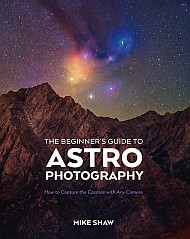Astronomy
The unexpected benefits of wall squats and other isometric exercises
Isometric exercises like wall squats are gentle on your body, but can enhance your fitness in a surprisingly efficient way, discovers Grace Wade
Categories: Astronomy
Foundation's new season has dramatic potential – but sadly falls flat
Foundation's new series is full of new characters and dramatic potential. But instead of mining those rich seams, too many plotlines have become shallow and absurd. It's hard to see a good show go bad, says Bethan Ackerley
Categories: Astronomy
Foundation's new season has dramatic potential – but sadly falls flat
Foundation's new series is full of new characters and dramatic potential. But instead of mining those rich seams, too many plotlines have become shallow and absurd. It's hard to see a good show go bad, says Bethan Ackerley
Categories: Astronomy
Slay the new slang: check out a guide to social media’s baffling lingo
Language is evolving rapidly in a world of social media. Our millennial reviewer finds Adam Aleksic's Algospeak to be a much-needed helping hand
Categories: Astronomy
Slay the new slang: check out a guide to social media’s baffling lingo
Language is evolving rapidly in a world of social media. Our millennial reviewer finds Adam Aleksic's Algospeak to be a much-needed helping hand
Categories: Astronomy
The cosmos is vast, so how do we measure it?
The awe-inspiring distances of the cosmos are hard to visualise, so how can we be certain we are measuring them correctly? Chanda Prescod-Weinstein explains
Categories: Astronomy
Is this the raciest conference invite ever?
Feedback has been invited to an event next year in Shaoxing, China. It's an academic conference promising "revolutionary thinkers who are redefining human intimacy through cutting-edge robotics and AI"
Categories: Astronomy
Plans to genetically screen newborns for rare diseases are problematic
The UK's health secretary has announced a 10-year plan to check newborns for a huge range of rare conditions. There are major medical and ethical issues with this, argues neurologist Suzanne O'Sullivan
Categories: Astronomy
Provocative new book says we must persuade people to have more babies
The population is set to plummet and we don't know how to stop it, warn Dean Spears and Michael Geruso in their new book, After the Spike
Categories: Astronomy
The cosmos is vast, so how do we measure it?
The awe-inspiring distances of the cosmos are hard to visualise, so how can we be certain we are measuring them correctly? Chanda Prescod-Weinstein explains
Categories: Astronomy
Is this the raciest conference invite ever?
Feedback has been invited to an event next year in Shaoxing, China. It's an academic conference promising "revolutionary thinkers who are redefining human intimacy through cutting-edge robotics and AI"
Categories: Astronomy
Plans to genetically screen newborns for rare diseases are problematic
The UK's health secretary has announced a 10-year plan to check newborns for a huge range of rare conditions. There are major medical and ethical issues with this, argues neurologist Suzanne O'Sullivan
Categories: Astronomy
Provocative new book says we must persuade people to have more babies
The population is set to plummet and we don't know how to stop it, warn Dean Spears and Michael Geruso in their new book, After the Spike
Categories: Astronomy
Will we ever feel comfortable with AIs taking on important tasks?
An example from the history of mathematics shows how views on the trustworthiness of artificial intelligence can quickly start to change
Categories: Astronomy
Will we ever feel comfortable with AIs taking on important tasks?
An example from the history of mathematics shows how views on the trustworthiness of artificial intelligence can quickly start to change
Categories: Astronomy
Astronomers trace mysterious blast of X-rays to 'Die Hard' star that refuses to perish (video)
Astronomers have traced a mysterious blast of X-rays to a star that, like a cosmic action hero, just refused to die.
Categories: Astronomy
This is the star projector I’d pick for perfect views of the night sky
One of the best star projectors, the Pococo Galaxy Star projector, has 24% off this Amazon Prime Day.
Categories: Astronomy
Every living former NASA science chief opposes Trump's proposed budget cuts in letter to Congress
The letter warns that the proposed FY2026 budget would halt dozens of missions, gut future programs and threaten U.S. leadership in space science.
Categories: Astronomy
Antidepressant withdrawal symptoms may be less common than we thought
Previous estimates have suggested that more than half of people who stop taking antidepressants experience withdrawal symptoms, but now a review of the evidence suggests this isn't the case, at least for short-term use.
Categories: Astronomy
Antidepressant withdrawal symptoms may be less common than we thought
Previous estimates have suggested that more than half of people who stop taking antidepressants experience withdrawal symptoms, but now a review of the evidence suggests this isn't the case, at least for short-term use.
Categories: Astronomy


